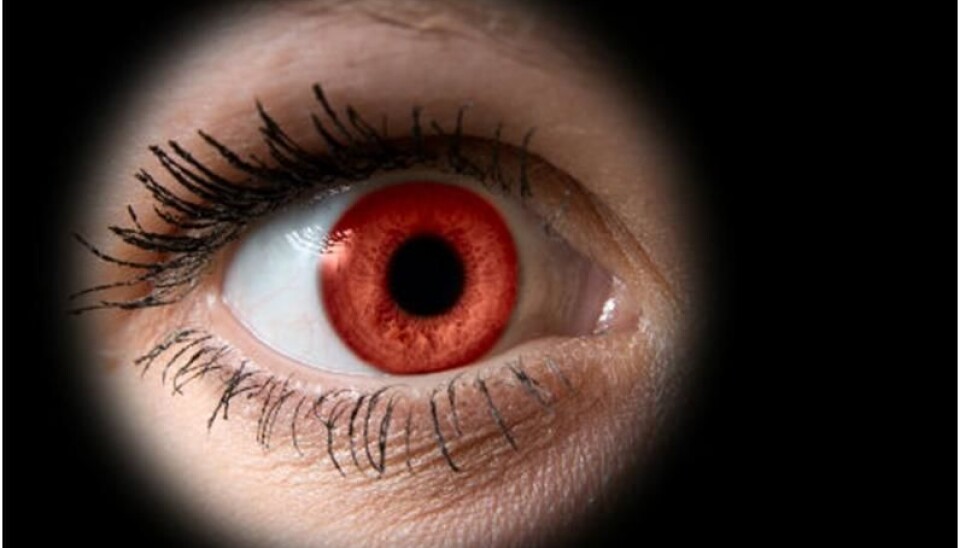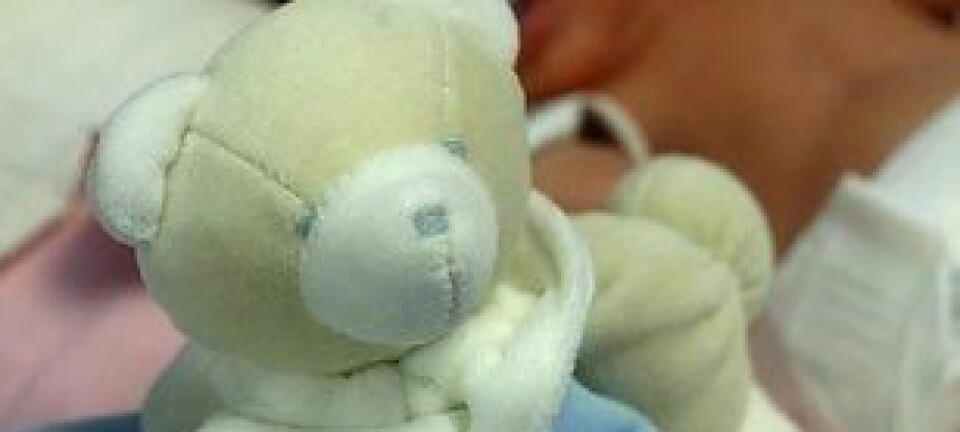An article from University of Oslo

An eye for an eye saves sight
A damaged cornea is one of the most common causes of blindness worldwide. But now there is a cure.
Denne artikkelen er over ti år gammel og kan inneholde utdatert informasjon.
Our cornea is our window on the world. When it becomes unclear, we lose our eyesight. But now, there is help to be found.
At the Eye Department of Ullevål University Hospital in Oslo, Norway, stem cell research is producing important results. By using components from the patient's own blood and the patient's own tissue, it is now possible to preserve sight even if the cornea is destroyed.
In every form of transplantation, there is a risk that the body will reject the transplanted tissue through an immune reaction because it perceives the transplant as a foreign body.
Previously, researchers used a number of components from animals when they cultured tissue for transplantation. The problem was that these foreign animal elements gave a high risk both of strong immune reactions and of spreading disease from animals to humans.
Now, the animal components are replaced by serum from the patients themselves - and with great success.
Minimising the Risk
The serum containing components from the patient's own blood is used as a growth-stimulating agent. At the same time, researchers grow tissue in an artificial environment outside the body. Normally, the tissue has been collected from the patient.
In this way, both the serum and tissue are from the same patient - and hey presto! - the risk for an immune reaction causing tissue rejection is almost negligible.
“When we use the patient's own serum, we avoid introducing foreign proteins into the tissue we grow. Thereby significantly reducing the risk for an immune reaction”, explains Professor Bjørn Nicolaissen, currently working at the Department of Clinical Medicine, and Director of Research at the Center for Eye Research at Oslo University Hospital.
Our window on the world
A New Year's rocket that bores into the eye. A chemical burn that corrodes the cornea. An infection or hereditary disease that causes loss of cells. The causes of damage to the outer layer of the eye can be many. Common to all of them is that they destroy the cornea.
“The cornea is our window on the world - through it we see everything. If it becomes unclear, we lose our sight”, explains Nicolaissen.
This is why the new treatment methods are invaluable. Quite simply, they save people's sight.
Advanced methods
Patients with chemical burn injuries or severe inflammation reactions that cause significant changes on the surface of the eye and infiltration of tissue from the mucous membrane could not previously have received a corneal transplant.
A normal, healthy corneal epithelium is clear and transparent. However, a damaged cornea with infiltration of mucosal tissue is opaque, with ingrown blood vessels. This increases the immune reaction significantly, and has therefore been an obstacle to successful transplantation.
Now there is a remedy.
At transplantation, all of the abnormal and opaque tissue from the surface is removed. Then, the tissue to be transplanted is laid on top of the cornea and fixed round it. The tissue is supported by a special type of membrane that suppresses the immune reaction. This method circumvents the problem of the immune response.
The important donor
A continuous challenge with regard to transplantation of the cornea's deeper layer is that of finding enough donors.
The cornea's innermost cell layer is called the endothelium. In many patients, this cell layer becomes defective. The result is an opaque cornea with increased fluid volume. Even the best transplantation methods and ingenious techniques cannot help if there is no donor. Therefore, researchers are working to reduce the need for donors.
“Our first goal is to isolate the endothelium from the donor cornea and, in a culture system outside the body, generate enough endothelium to be able to transplant into five to ten patients”, comments Nicolaissen.
“Our next goal is to isolate cells from the patients themselves in cases where this is possible”.
By attaining these goals, researchers reduce the need for donor tissue.
To be at the forefront
During the first few years after a normal transplantation there is a significant loss of cells from the endothelium. This loss, and a subsequent increased fluid volume in the cornea, indicates the need for a new transplantation.
“When we make the transplants outside the body in an artificial environment, we can increase the number of cells in the transplants and thus compensate for the loss that occurs following the transplantation”, explains Nicolaissen.
It is a matter of being at the forefront. Scientists know what to expect, and can therefore prepare for it. Since the loss of cells is compensated for by an increased number of cells, the need for re-transplants is reduced - and thus also the need for donor corneas.
Stem cells and DNA
“There is considerable interest in stem cells in the cornea”, says the researcher.
“Not only because production of corneal epithelium outside the body can cure patients with superficial injury to the cornea, but also because the stem cells are easily available and a good system for studying factors that influence stem cell characteristics and variability".
When tissue is removed from its natural element and transferred to a foreign culture system, injury to the tissue occurs. Nicolaissen says that they attempt to minimise these injuries as far as possible. In order to achieve this, they are studying different cell types in cooperation with Professor Andrew Collins of the Institute of Basic Medical Sciences in order to gain more knowledge about damage to DNA.
“We have taken capsules surrounding the eye's lens from patients with cataracts. We have analysed these immediately, transferred them to a normal culture system and grown the cells there for one week”, explains Nicolaissen.
The results are clear - transferring cells from the body to such a system increases the damage to the DNA. When researchers know what causes the damage, it will become easier to prevent it.
Goal-oriented research
A conscious strengthening of translational research has yielded results. Nicolaissen relates that the short distance between clinicians and researchers eases communication and stimulates research.
“We are the first in Scandinavia to develop eye tissue for transplantation, and the first clinic in the world that via this method uses a medium that does not create foreign proteins in the tissue we make. And we will continue to be in the forefront in Scandinavia and internationally”, concludes Nicolaissen, determinedly.
































